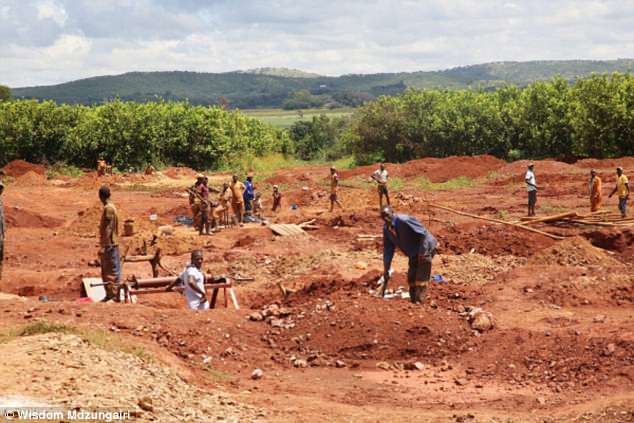By Zimbabwe Environmental Law Association
The Zimbabwe Environmental Law Association (ZELA) notes with concern the slow and poorly coordinated search, rescue or recovery efforts of five artisanal miners trapped underground at Task Mine in Chegutu. This disaster follows several others in the last two years that claimed lives of those trying to eke a living as artisanal miners in a quest to fight poverty, unemployment and fend for their families. The accident exposes lack of adequate implementation of disaster and emergency preparedness measures in the mining sector. It appears no one in the mining sector, including Government and the mining industry is learning anything from past mistakes, experiences and disasters. While the situation of the five young miners is not quite clear,the hope of rescuing them seems to be fading with each passing day.
We are deeply concerned and saddened by the lethargic and indolent response by the Government in the Chegutu disaster. It is indeed worrisome to note that when such incidences happen, even other victims who might have sustained minor injuries end up losing life due to the authorities’ failure to expeditiously attend to disasters.Over the years,the significant contribution of artisanal and small-scale miners to gold production levels in the country and the national economy has been realised
The miners were said to have been working in an old underground shaft in a claim that is alleged to historically belong to Pickstone Mine, but was being controlled by influential players in the gold sector under a mining cooperative. The mine claim is also adjacent to a Zimbabwe Mining Development Corporation (ZMDC mining block), which has a shaft that might offer access to the mining area. The mining activities at this mine site are alleged to have been illegal with mine monitoring appearing to be weak in the country. While the mine collapsed on the 8th of September 2020, other incidents were reported before the current one. For example, it is reported that the mine once collapsed, when the mine shaft was 40 meters deep. Pickstone mine allegedly spearheaded the rescue operation and managed to handle the incident.
With some many people having been pushed into artisanal gold mining in the advent of Corona Virus which has disrupted livelihoods and other sources of income such incidences are likely to increase. Among the five trapped miners is a child aged 17. Around the country many school children have joined artisanal gold mining activities as a result of poverty and idleness since the closure of schools induced by COVID-19 lockdowns.
Over the past two weeks, ZELA has received several calls and messages from family members and members of the public calling for assistance from the Government, mining companies and other actors to help rescue or at least recover the bodies of the miners. To date, reports indicate that efforts to search, rescue or recover have been slow. Information gathered on the ground indicates that a team of five inspectors from the Ministry of Mines once went to the site but could not do anything as it was dark with the ground not having been stable. It is reported that some of the artisanal miners who used to work in the same mine shafts are trying to spearhead the search, rescue or recovery efforts but are failing to locate the trapped miners. Reports also indicate that there has been ground movement at the mine. In addition, no current underground plans are available at the mine site since the shafts were being worked on by artisanal miners. The mine plans are said to have been last updated in 1963, and there are a lot of tunnels underground which make it difficult to search, and to open the unstable ground in the vicinity of collapse. This calls for a proper ground survey to be done to allow rescue missions. Unorganized rescue efforts might lead to other injuries or disasters.
This disaster comes in the wake of many other artisanal mining disasters in the past which killed many. In February 2019 another disaster happened at Battlefields which killed 24 miners. However, during that disaster there were combined efforts from different actors and stakeholders to rescue those who were trapped,and this took a record four days. The efforts were complimented by corporate social efforts from large scale mining companies who included ZIMPLATS, RioZim and Afrochine smelting company. On the contrary, in the case of Task Mine, no such efforts appear to be in place. ZELA is therefore appealing to Government, corporate actors and other stakeholders to assist in the search, rescue or recovery efforts.
As an organisation we stand with the families of the trapped miners and encourage the Government to dedicate more resources and intensify the search, rescue or recovery efforts. Government should appeal for help from mining companies, many of whom are now either buying gold from artisanal miners or organising artisanal miners to mine on old mine shafts. We are also calling on the Government to formalise artisanal mining to enable the massive number of people who have just joined the sector to mine legally and to follow mine safety standards. Formalisation in its various forms may enhance adoption of safety, health and environmental standards to curb such mine disasters. If not already in place, artisanal and small-scale miners and their Associations should think of establishing a Disaster and Emergency preparedness Fund to provide support in case of mine accidents for their membership. This will enable them to mobilise equipment for search, rescue or recovery during disasters.
As ZELA we have assisted artisanal and small scale miners with training on safety, health and environmental issues, responsible sourcing systems, mine development, green mining practices and strengthened the governance and management of their associations.
To the Government, concerted and diverse rescue initiatives must be put in place for disasters such as this one,afterall a stitch in time saves nine.
